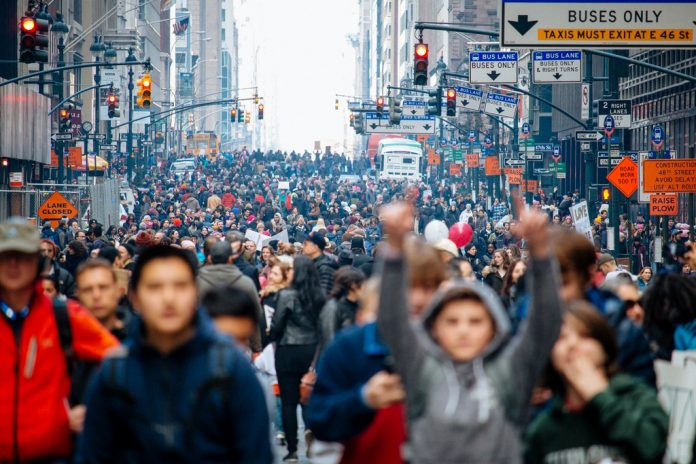On Saturday, the anniversary of Donald Trump’s inauguration, hundreds of thousands of Americans took to the streets to register their discontent with our President. The Women’s Marches throughout the US on Saturday were also the first anniversary of the massive Women’s Marches last year that mobilized millions of Americans. Last year, my family and I drove to Washington to participate in the March, but this year we stayed closer to home and joined the New York City March instead. My mother took me to marches occasionally when I was a child, but I only started attending protest marches and demonstrations on my own, or with friends, in the early 1980s, so I like to think I have some perspective on these kinds of demonstrations.
These demonstrations are important. They mobilize activists, let people in less progressive parts of the country see that they are not alone-both this year and last year, demonstrations were not confined to big liberal cities but occurred more or less all over the country, and they remind all of us that these are not normal times. When you here a pundit on television or Twitter claim that these marches don’t make a difference, that is there way of saying they support Trump.
Although Saturday’s march, and the one last year immediately following the inauguration have been presented as Women’s Marches, they are really omnibus opposition rallies. Last year the Women’s March was a catharsis for many as they began to adapt to the new reality of a white supremacist, right wing administration and the advent of democratic rollback, but it was also celebratory as opponents of Trump came together to show their numbers and vow they would stand up to him.
This year’s march was different. There were still funny costumes and props and clever signs, the feel was distinctively less upbeat as a year of the Trump administration has been difficult for even the most stable, genius or not, among us. Anger is too strong a word to describe the feel, but determination might be a better one. Tens of thousands of women seemed determined that the era of men running the government will soon be over. Among the most popular signs were those alluding to the November elections. “Grab him by the midterms” was one of the best of that variety. Hundreds, perhaps thousands, bore signs either proclaiming that the “blue wave” was coming or that were simply images of blue waves.
In New York, a majority of the marchers I saw were white, but there were significant numbers of African Americans, Latinos and Asian Americans. Additionally, if the March is any evidence, the Resistance is pretty middle aged these days. It seemed like a very big majority of those marching were between about 40 and 70 years old. This is an age group that does not always come out in huge numbers for rallies and the like, but that are among the more reliable voters. Many of the children and teenagers I saw at the march were there with their parents or other family members. While this was in some respects very positive, it also probably pushed some young people away as they may see marching against Trump as a boring old person thing. My own teenage sons, waited until we were safely out of the house before joining the march a mile or so behind us.
A year in to the Trump administration and the marches are still massive and widespread, if underreported, but marches do not translate directly into victories at the voting booth. This is not an issue of those who attend marches not voting. There is no reason to believe that is the case. However, although there were marches all over the country this year and last, the biggest demonstrations occurred in safely blue districts. The march in Manhattan was inspiring, but we New Yorkers have little ability to affect the 2018 election directly through our vote, as many New Yorkers, like San Franciscans or Angelenos are represented from the City Council to the US Senate by Democrats who rarely face competition.
The issue facing the Resistance is that intensity is not measured at the polls. There are a lot of angry progressives who will enthusiastically vote Democrat in November, but each of their votes count just as much as those of the older white non-urban swing voters who aren’t crazy about Trump, but will vote Republican because they pretty much always do. Projecting a big Democratic victory based on enthusiasm at a January march is foolish, but many activists may implicitly be doing that. This raises a very real problem because if November does not turn out well for the Democrats, it will be devastating for many on the left. Opponents of the President can ameliorate this by recognizing that Trump’s base is enthused too and by accepting that the struggle to restore democracy in the US begins in earnest in November of 2018, but last for several years, and election cycles, after that.
Lincoln Mitchell is a scholar, consultant and writer based in New York and San Francisco. Follow him on Twitter @LincolnMitchell

